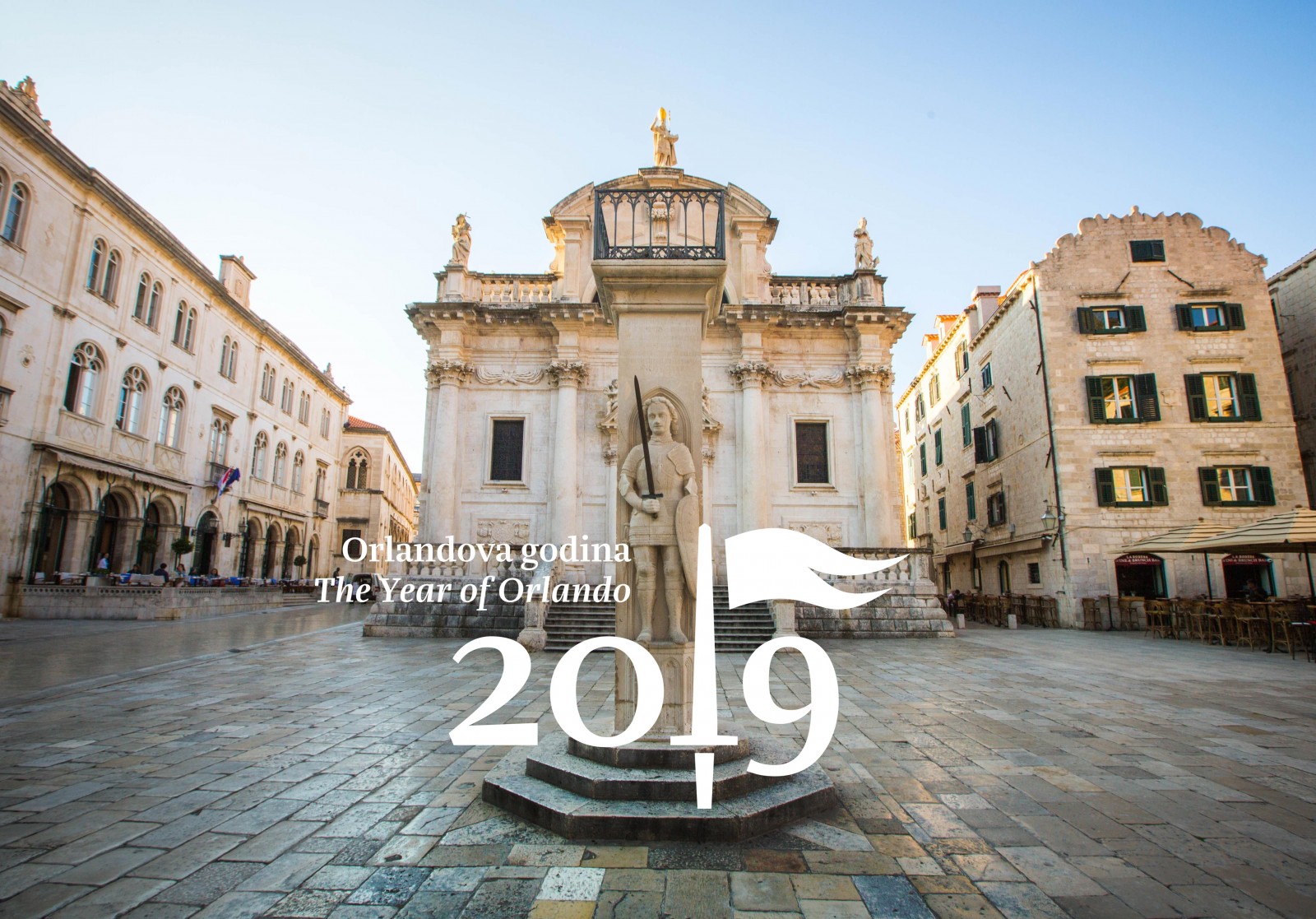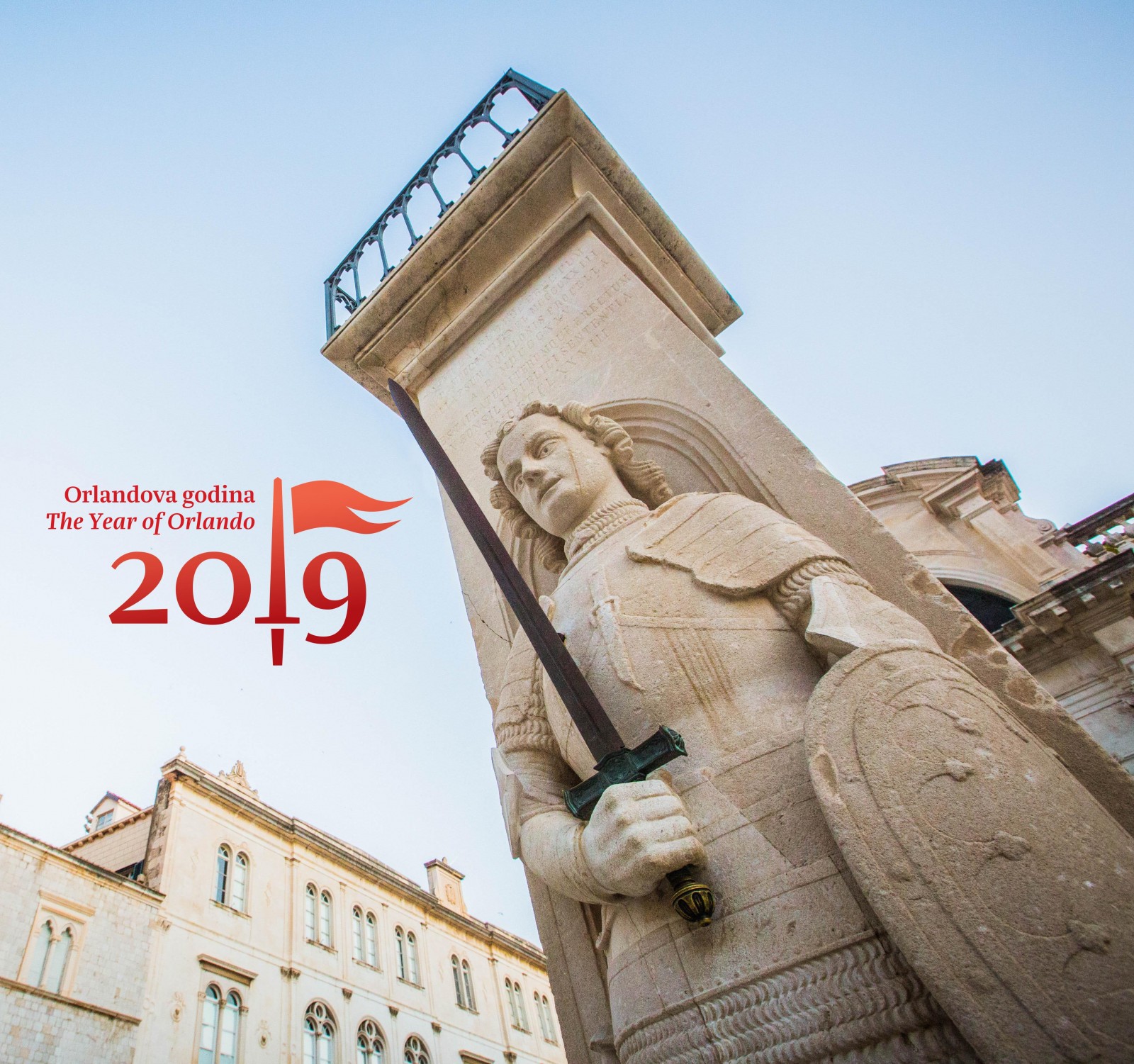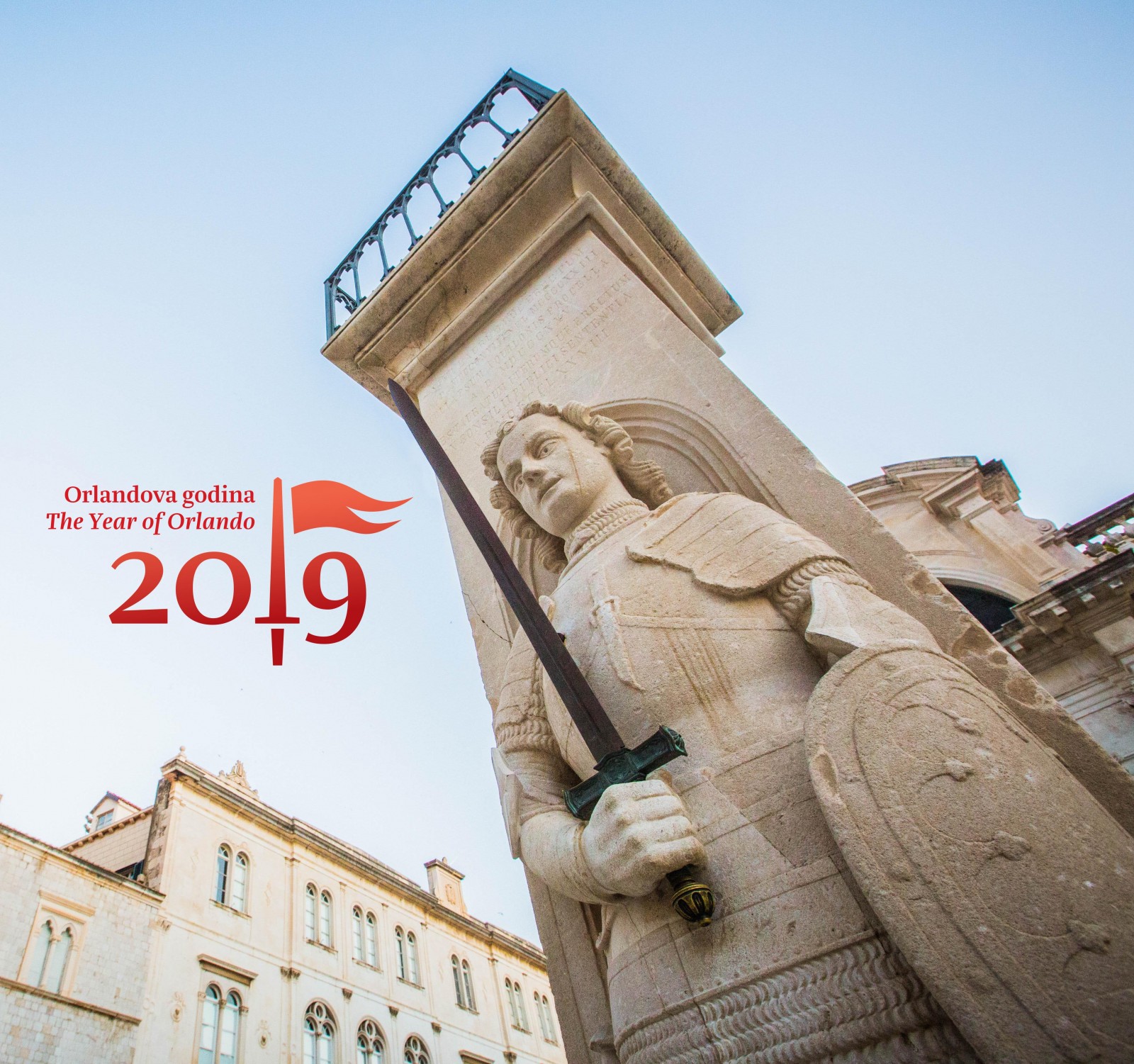Orlandov stup je izradio Bonino di Jakopo iz Milana uz pomoć domaćeg majstora Antuna Ragusea. Konkretna ideja o gradnji stupa je krenula 1417. godine, a do realizacije je došlo dvije godine kasnije. Tada su vlastelini, senatori Lujo Gozze i Zore Palmotta odlukom Malog vijeća (dubrovačka Vlada) od 13. svibnja 1419. dobili zadatak da izrađeni Orlandov stup postave na glavni gradski trg pred crkvom sv. Vlaha.
Prigodno je Orlando dobio i mitološku priču o tome kako je obranio Grad od Saracena kod Lokruma. Na taj je način izbjegnuta negativna konotacija odnosno napravljena je alibi-priča njegovog okretanja prema Istoku na kojem se rađao Osmanski Imperij, a koji će pokoriti čitav Balkan. Prema nekim izvorima Dubrovniku je ideju o Orlandu prenio ugarski kralj Sigismund, koji je boravio u Dubrovniku nakon poraza od Osmanlija kod Nikopolja 1396. godine. Venecija je svuda stavljala svoje krilate lavove, pa je Dubrovnik i u simboličnom smislu želio napraviti odmak od nekadašnjih osvajača. Dubrovnik je postao samostalnom državom upravo zahvaljujući ugarskom kralju- Ludovicu I, koji je porazio Mlečane i 1358. Zadarskim mirom, osigurao Dubrovniku svoju zaštitu, ali i državnu neovisnost.
Osim što je predstavljao najvažniji svjetovni simbol dubrovačke države (ono što je u duhovnom smislu bio i jest sv. Vlaho) na kojemu se vijorio dubrovački barjak i s kojega su zduri čitali proglase dubrovačke vlade, Orlando je služio i kao stup za kažnjavanje (kar) te je, pod nogama viteza, imao označenu mjeru dubrovačkog lakta (51,2 centimetra), kojim se mjerila tkanina. Jasno, lakat i njegova dužina odgovaraju dužini Orlandovog lakta na desnoj ruci (u kojoj drži mač).
Padom dubrovačke države pod trupama Napoleona (1806.) odnosno pripajanjem Republike Habsburškoj Monarhiji na Bečkom kongresu 1815., i Orlandu su uslijedila teška vremena. Iskoristivši pad Orlandova stupa u olujnom nevremenu 1825. godine, Habsburzi su stup, simbol nekadašnje Raguse, spremili u podrumske prostorije Kneževa dvora. Zalaganjem Dubrovčana stup je vraćen pred crkvu sv. Vlaha tek 1878. godine i to na krivo mjesto i okrenut u smjeru Sjevera umjesto, kako je izvorno, prema Istoku.

Orlando's Column was made by Bonino di Jacopo from Milan with the help of the local master Antun Raguseo. The idea to erect the Column was born in 1417, and its construction started two years later. On 13th May 1519, the Minor Council entrusted the noblemen, senators Lujo Gozze and Zore Palmota, with the task to place Orlando's Column on the main square in front of St. Blaise's Church.
On that occasion, Orlando (Roland) was also attributed a myth about having defended the City against the Saracens just off Lokrum. This was done in order to avoid negative connotations, i.e. to create an alibi for the statue facing the East, where the Ottoman Empire was on the rise, an empire which would conquer the entire Balkans. Some sources claim that the myth about Orlando was brought to Dubrovnik by the Hungarian King Sigismund who stayed in Dubrovnik after the Ottomans' defeat in the Battle of Nicopolis in 1396. At the time, Venice erected its winged lions everywhere so Dubrovnik wanted to distance itself in a symbolic manner from its former conqueror. It was precisely thanks to the Hungarians, i.e. the Hungarian King Louis I who defeated Venice and signed the Treaty of Zadar in 1358, that Dubrovnik gained its independence. By signing the Treaty, the King provided Dubrovnik with his protection, but also its own independence.
Besides representing the most important secular symbol of the Ragusan State (the religious equivalent being St. Blaise), Orlando's Column also carried the post on which the Ragusan flag was hoisted, public proclamations were usually made from atop of the Column and public punishments were performed at its site. At the knight's feet, there was the standard for trading fabric – the Ragusan cubit ('lakat') measuring 51.2 cm. Both the standard and its length correspond to the length of Orlando's right forearm (the one in which he holds the sword).
When Dubrovnik was conquered by Napoleon in 1806, and when it was annexed to the Habsburg Monarchy at the Congress of Vienna in 1815, Orlando too was facing difficult times. Taking advantage of the fact that Orlando's Column crashed in a strong gust of wind in 1825, the Habsburgs removed the Column, the symbol of the former Ragusa, and placed it in the cellar of the Rector's Palace. Due to popular demand, the Column was returned in front of St. Blaise’s Church, but only in 1878. It was placed in a different spot than originally, and it was now facing North instead of East.

